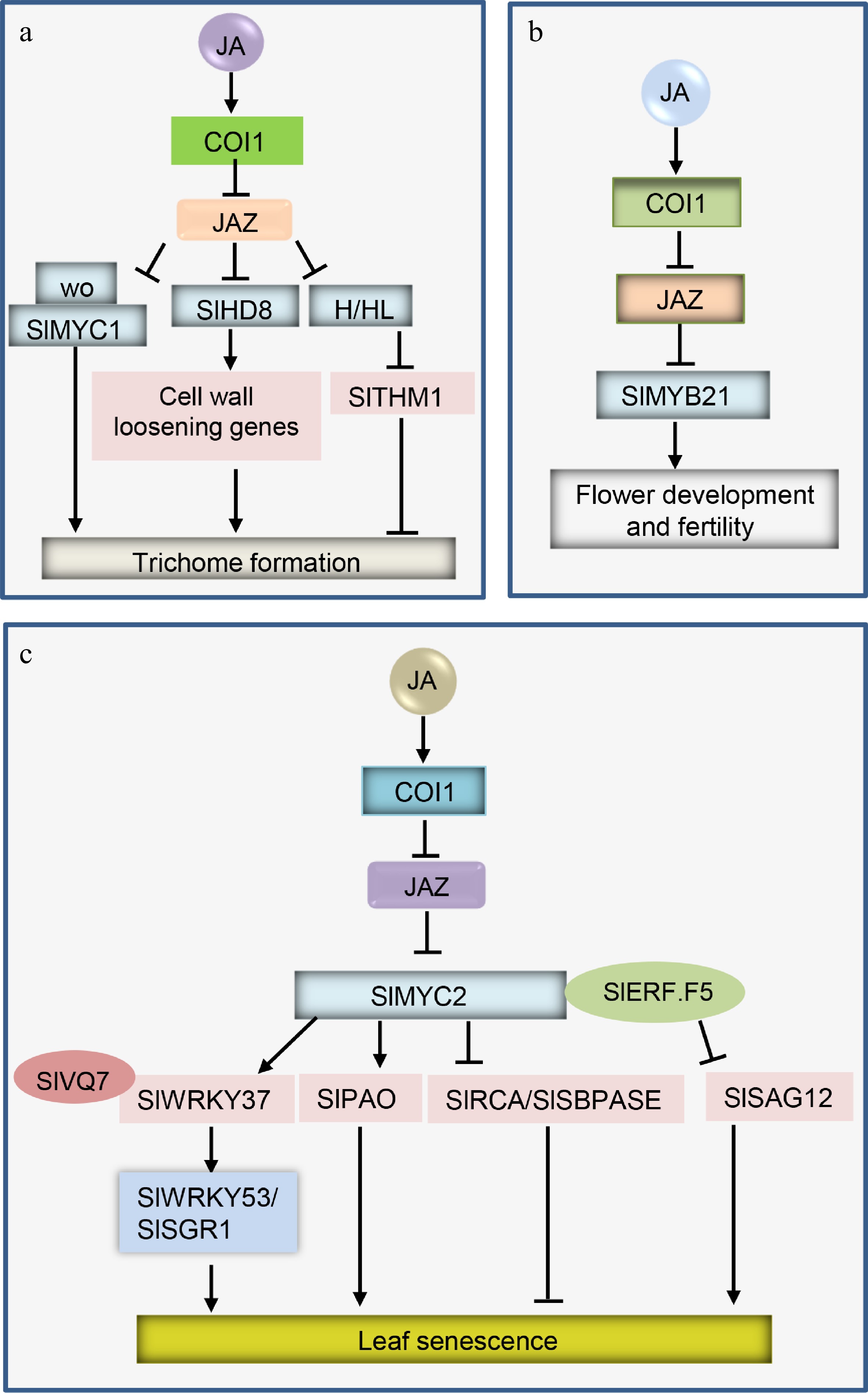-

Figure 1.
Simplified models of JA signaling in tomato trichome formation, flower development and fertility, and leaf senescence. The bioactive JA is perceived by COI1-JAZ and triggers the degradation of JA repressors JAZs via the 26S proteasome pathway. JAZ degradation releases various downstream TFs to control JA-mediated responses, for example, (a) the release of wo/SlMYC1, SlHD8, and H/HL, to regulate trichome formation in tomato; (b) the release of SlMYB21 to control tomato flower development and fertility; (c) the release of SlMYC2 to promote tomato leaf senescence.
-

Figure 2.
Simplified models of JA signaling in tomato resistance to abiotic and biotic stresses. JA induces the degradation of JAZs through the 26S proteasome pathway, which releases different TFs to modulate diverse responses. (a) The released SlMYC2 controls tomato tolerance to cold and drought stresses. (b) Insect attack activates Ca2+ signals to promote the interaction of SlCaM2 and SlERF16, which promotes SlERF16 to activate JA biosynthesis for herbivore defense. (c) The released SlMYC2 and SlWRKY45 negatively control tomato resistance to RKN, while SlCSN4/5 positively controls this resistance; in addition, miR319 inhibits JA accumulation, whereas SlMPK1/2 induces JA biosynthesis. (d) The released SlVQ15-SlWRKY31 module, SlMED8-SlMYC2-SlMED25, and SlMTBs finely tune tomato defense against B. cinerea.
Figures
(2)
Tables
(0)